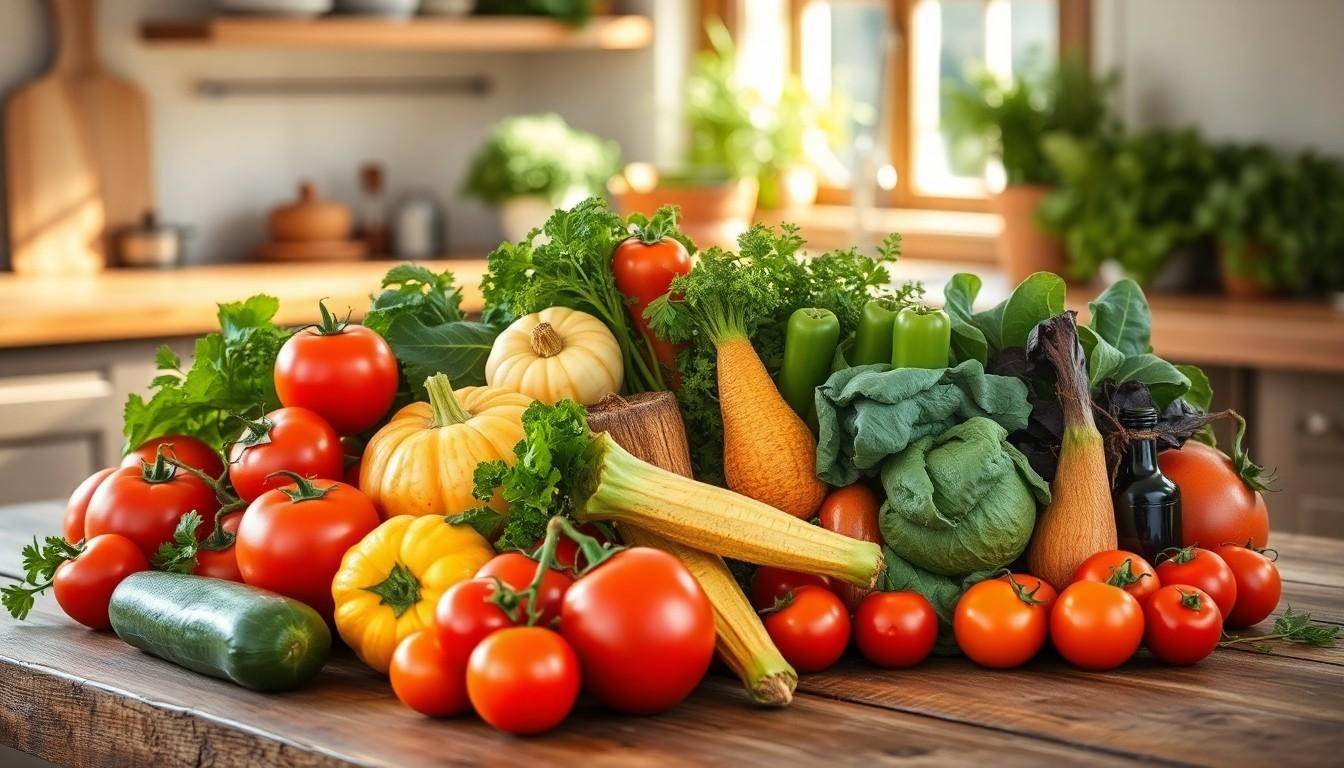In a world where fresh ingredients reign supreme, farm-to-table TV shows are serving up a delicious revolution. Viewers tune in not just for the mouthwatering dishes but for the journey from soil to supper. It’s like a culinary road trip, minus the flat tires and questionable gas station snacks.
Imagine plucking ripe tomatoes straight from the vine or savoring herbs that haven’t seen the inside of a plastic wrap. These shows inspire home cooks to embrace local produce while keeping the kitchen fun and vibrant. With a dash of humor and a sprinkle of creativity, they transform everyday meals into gourmet experiences. So grab your apron and get ready to turn your kitchen into a farm-fresh haven—because who says you can’t eat like a chef and laugh like a sitcom star at the same time?
Farm to Table TV Show Recipes
Farm to table TV show recipes emphasize the use of local ingredients in meal preparation. Viewers often discover how these recipes highlight fresh produce sourced directly from farmers. Each episode features various dishes that not only satisfy taste buds but also support sustainable practices. Many shows showcase unique approaches to familiar ingredients, encouraging culinary creativity.
Cooking techniques often shared in these shows include roasting, grilling, and sautéing. Chefs explain the importance of seasonal ingredients and how they enhance flavors in dishes. Recipes frequently include tips for sourcing local produce, ensuring freshness and quality. Numerous chefs share personal anecdotes about their farming experiences, creating a deeper connection to the dishes they prepare.
Common themes arise throughout various episodes, such as community engagement and education. Shows usually highlight local farms and the people behind them, emphasizing the connection between farmers and consumers. Recipes often include diverse cultural influences, reflecting the rich culinary landscape of each region featured.
Engagement with viewers occurs through interactive segments, including Q&A sessions and social media challenges. Inspiring storytelling often accompanies recipes, enhancing the viewing experience and making cooking relatable. Home cooks gain a sense of empowerment as they replicate these recipes in their kitchens, bridging the gap between farm and table.
Overall, farm to table TV show recipes promote not just cooking but a lifestyle centered around sustainability and community support.
Popular Recipes Featured in Farm to Table Shows

Farm-to-table shows feature an array of recipes that highlight local and seasonal ingredients. These recipes captivate audiences with their emphasis on freshness and sustainability.
Seasonal Ingredients
Seasonal ingredients play a crucial role in many recipes showcased on these shows. Chefs often prepare dishes using produce harvested at its peak ripeness. For instance, summer tomatoes create vibrant salads, while fall squash lends richness to hearty soups. Recipes like roasted vegetable medleys spotlight an array of colorful seasonal greens. Utilizing ingredients at their freshest enhances flavor and nutritional value, providing viewers with delicious inspiration. Furthermore, home cooks appreciate tips on selecting seasonal produce, fostering a deeper connection with their local farms.
Regional Variations
Regional variations of recipes bring diverse culinary traditions to the forefront. Each area boasts unique ingredients that reflect local culture and agricultural practices. For example, coastal regions might feature seafood dishes, while inland areas focus on hearty grains and meats. Shows often present recipes like Southern gumbo, which incorporates local shellfish and spices. In contrast, Northeastern recipes may highlight dairy products and root vegetables. Highlighting these differences showcases not just food but story and heritage, engaging viewers with the rich tapestry of regional cuisines.
Cooking Techniques Highlighted
Farm-to-table TV shows focus on various cooking techniques that enhance the connection between fresh ingredients and delicious results. Each technique showcases the versatility of local produce.
Fresh and Simple Preparations
Roasting brings out natural sweetness in vegetables. Grilling imparts a smoky flavor, ideal for meats and seasonal produce. Sautéing quickly cooks ingredients while retaining their nutritional value. These methods require minimal ingredients and encourage viewers to experiment with flavors. By utilizing fresh herbs and spices, cooks elevate simple dishes. Shows often emphasize how quick prep can transform everyday meals into culinary delights.
Emphasis on Sustainability
Sustainability appears as a central theme in these cooking techniques. Emphasizing local sourcing minimizes environmental impact and supports community farms. Chefs discuss the importance of seasonal ingredients in achieving optimal flavors and nutrition. Techniques also include creative uses for leftovers, reducing food waste. With a focus on organic produce, viewers learn to appreciate ethically grown ingredients. The commitment to sustainable practices influences the way food is prepared and enjoyed.
Benefits of Farm to Table Cooking
Farm-to-table cooking offers numerous advantages that extend beyond simply preparing food. Fresh, local ingredients enhance flavor significantly, providing a vibrant taste profile in every dish. Nutritional value also benefits from this cooking style as seasonal produce often packs more vitamins and minerals than imported options.
Supporting local farmers fosters community engagement, creating strong connections between consumers and producers. Purchasing from nearby farms promotes economic sustainability, which can help maintain local agricultural practices. Viewers connect with their communities, feeling a sense of pride in supporting local food systems.
Environmental impacts are reduced through farm-to-table practices, as sourcing ingredients locally minimizes transportation emissions. This commitment to sustainability encourages cooks to consider the origins of their food, promoting a more conscious approach to eating. Dishes often reflect regional flavors, allowing home cooks to explore diverse culinary traditions.
Flexibility in recipes encourages creativity in the kitchen. Home cooks find inspiration in using what’s readily available, adapting dishes based on seasonal offerings. Collected recipes may feature unique ingredients, pushing cooks to experiment and discover new favorites.
Sharing knowledge about cooking techniques also enhances the experience. Techniques such as roasting and grilling showcase the natural flavors of ingredients while requiring minimal intervention. Cooks engage in discussions about how to handle leftovers creatively, which helps reduce food waste.
Farm-to-table cooking embodies a holistic lifestyle that emphasizes flavor, nutrition, community support, and environmental responsibility. Each meal prepared serves as a celebration of local agriculture and culinary diversity.
Community and Environmental Responsibility
Farm-to-table TV shows are more than just a culinary experience; they represent a movement towards sustainability and community connection. By highlighting local ingredients and innovative cooking techniques, these shows inspire viewers to embrace fresh flavors and make conscious food choices.
Each recipe not only showcases delicious meals but also tells a story of the farmers and the land that nurtures the ingredients. This deeper appreciation for food transforms cooking into an enjoyable and creative endeavor.
As home cooks explore these recipes, they contribute to a larger movement that values nutrition, sustainability, and cultural diversity. Embracing the farm-to-table philosophy can lead to flavorful meals while fostering a sense of community and environmental responsibility.

